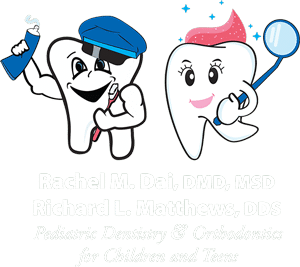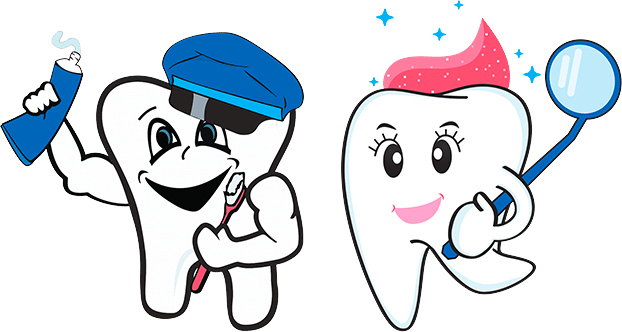Are you a concerned parent who wants to give your child the perfect smile? Look no further, because we’ve got you covered with our ultimate guide to braces! We understand that getting braces for your child can be overwhelming and confusing. That’s why we’re here to simplify the process for you and answer all your questions about braces. From the types of braces available to how they work, this comprehensive guide will help you make an informed decision on what’s best for your child’s dental health. So sit back, relax, and let us take care of everything!
What are Braces?
Braces are devices that are used to align and straighten teeth. They are typically made of metal or clear plastic and attach to the front of the teeth. There are many different types of braces that can be used to treat a variety of orthodontic issues. Some common problems that braces can help fix include:
-Crowded teeth
-Gaps between teeth
-Misaligned bite
-Crooked teeth
If your child has been diagnosed with one or more of these problems, you may be wondering if braces are right for them. The best way to determine this is to consult with an orthodontist. They will be able to assess your child’s individual needs and recommend the best course of treatment.
Types of Braces
There are many different types of braces that your child may need, depending on the severity of their condition. The most common type of braces is metal braces, which are made of high-strength stainless steel. They are the least expensive type of braces, but they are also the most visible. Ceramic braces are made of clear or white ceramic brackets, and they are less visible than metal braces. However, they are more fragile and can be more expensive. Invisalign® is a popular type of clear aligner that is virtually invisible and can be removed for eating and brushing your teeth.
The Benefits of Braces
There are many benefits that come along with braces, both for children and adults. For children, braces can help improve their smile and self-confidence. They can also help improve their bite and make it easier to keep their teeth clean. In addition, braces can help prevent more serious dental problems in the future. For adults, braces can improve their appearance and boost their self-confidence. They can also help correct bites that may have been causing pain or difficulty chewing. If you are considering braces for your child or yourself, be sure to talk to your orthodontist about all the potential benefits.
How to Care for Your Child’s Teeth with Braces
The American Association of Orthodontists recommends that children have an orthodontic evaluation by age 7. If your child’s teeth are coming in crooked or their bite is off, it’s time to make an appointment with an orthodontist. Once your child has been diagnosed with needing braces, it is important to take extra care of their teeth to ensure that their smile will be healthy and beautiful once the braces come off. Here are some tips on how to care for your child’s teeth with braces:
-Brush thoroughly at least twice a day: It is important to brush your child’s teeth thoroughly at least twice a day, especially after meals. Be sure to use a soft-bristled toothbrush and toothpaste that contains fluoride. You may need to help your child brush their teeth if they are not able to do so themselves.
-Floss daily: Flossing is just as important as brushing when it comes to caring for your child’s teeth with braces. Use a floss threader or water flosser to get between the wires and around the brackets of the braces.
-Watch what your child eats: Foods that are high in sugar can cause cavities, so it is important to limit sugary snacks and drinks when your child has braces. Hard and sticky foods can also damage the wires and brackets, so avoid these as well. Instead, focus on giving your
Alternatives to Traditional Braces
If your child is in need of braces, you may be wondering what alternatives are available to traditional metal braces. Here are a few options to consider:
Invisalign: Invisalign is a popular alternative to traditional braces that uses clear, removable aligners to straighten teeth. Because the aligners are nearly invisible, many patients prefer Invisalign over metal braces.
Lingual Braces: Lingual braces are another popular alternative to traditional braces. Lingual braces are attached to the back of the teeth, making them virtually invisible. Many patients prefer lingual braces because they are less visible than metal braces.
Ceramic Braces: Ceramic braces are made of clear or white ceramic, making them much less visible than metal braces. Ceramic braces are a good option for patients who want the benefits of traditional braces without a conspicuous appearance.
Self-Ligating Braces: Self-ligating brackets are made with a sliding door that holds the wire in place, eliminating the need for elastic bands (“rubber bands”). These brackets are smaller and less noticeable than traditional metal brackets and may provide a more comfortable experience for some patients.
Questions to Ask Your Orthodontist
As your child’s orthodontic treatment begins, you may have many questions. Here are a few important questions to ask your child’s orthodontist:
How long will my child need to wear braces?
The answer to this question will depend on the severity of your child’s dental problem. In general, the more complex the problem, the longer it will take to correct it. However, every case is different, so be sure to ask your orthodontist for a specific estimate.
What kind of braces does my child need?
There are many types of braces available today, including traditional metal braces, clear ceramic braces, and even invisible aligners. Your orthodontist will recommend the type of braces that are best suited for your child’s individual case.
What are the potential risks and complications associated with braces?
Although orthodontic treatment is generally safe, there are some potential risks and complications that you should be aware of. Be sure to ask your orthodontist about these before beginning treatment.
What can my child expect during the treatment process?
Orthodontic treatment can take several months or even years to complete. During this time, your child will need to visit the orthodontist regularly for adjustments and check-ups. It is important that you understand what to expect during this process so that you can best support your child.
There are a lot of different factors to consider when it comes to deciding whether or not braces are right for your child. By weighing the pros and cons, researching options, and discussing with your child what they would like, you can make an informed decision that works best for everyone involved. Braces have been proven to improve oral health and self-confidence in children; therefore, if you decide that braces are the right option for your family, it will be worth it in the end.






